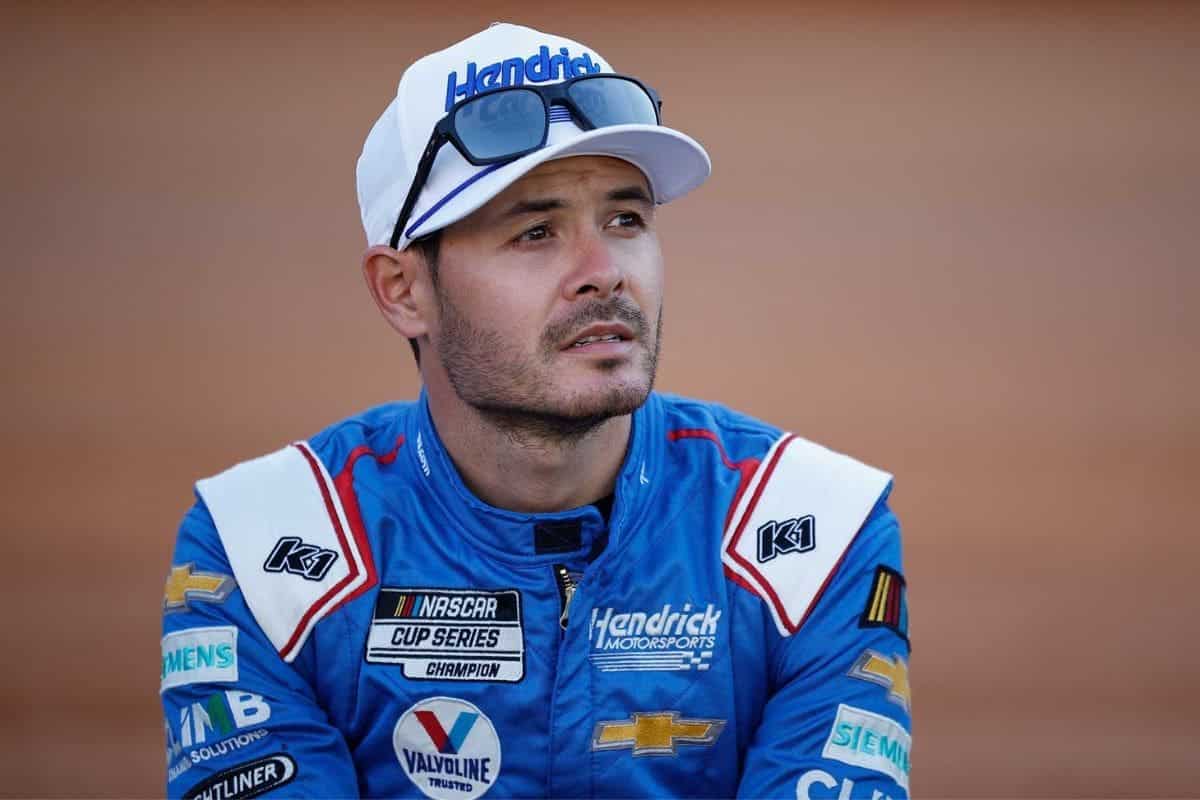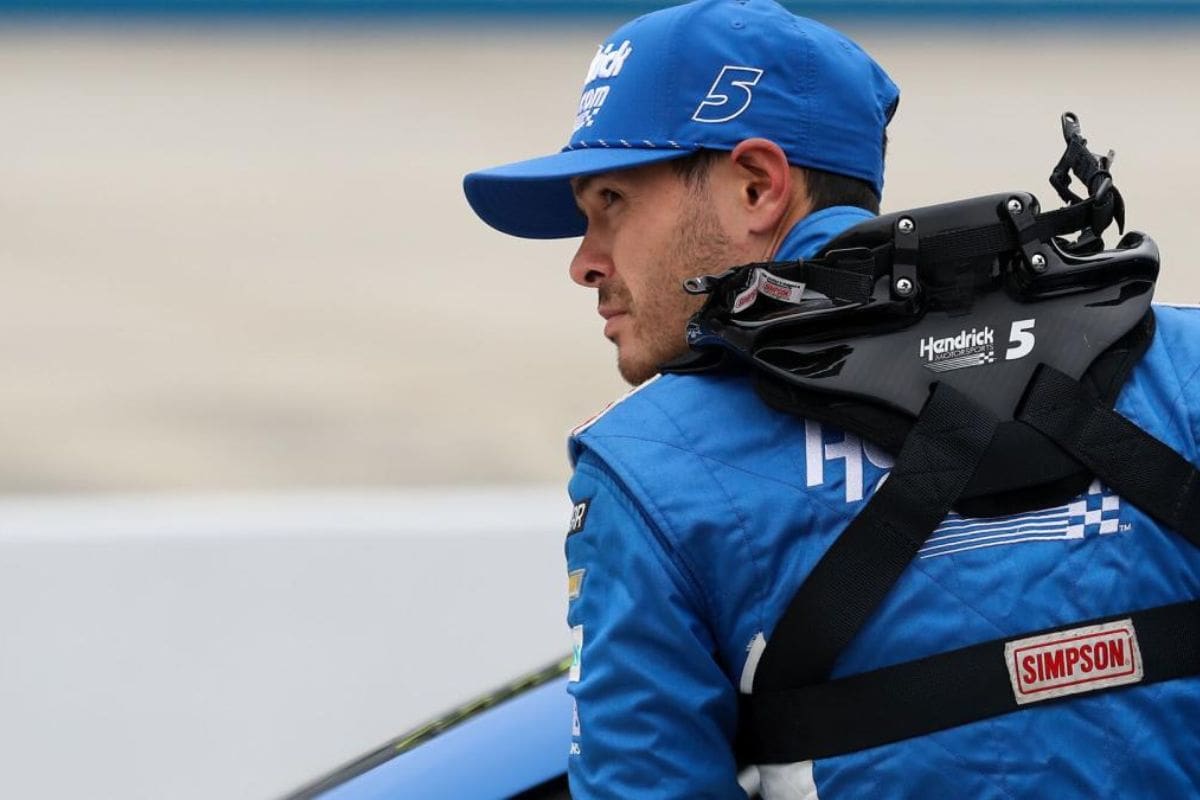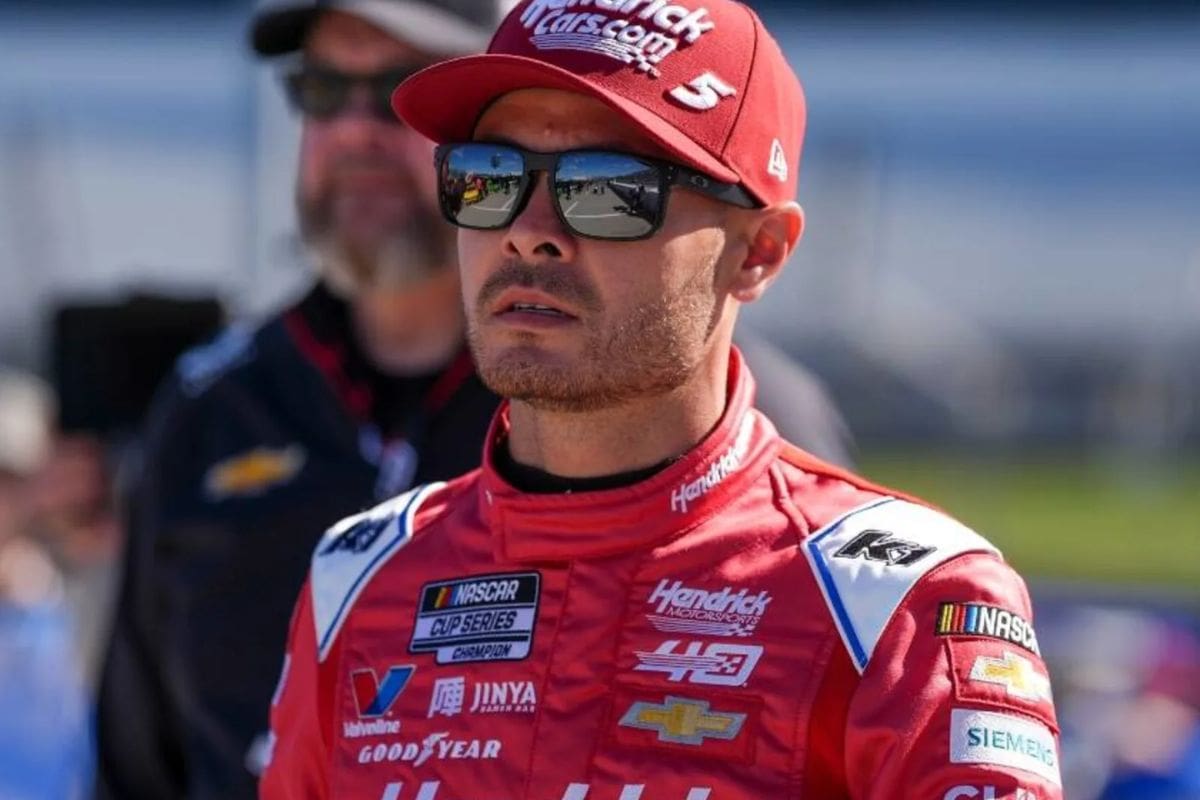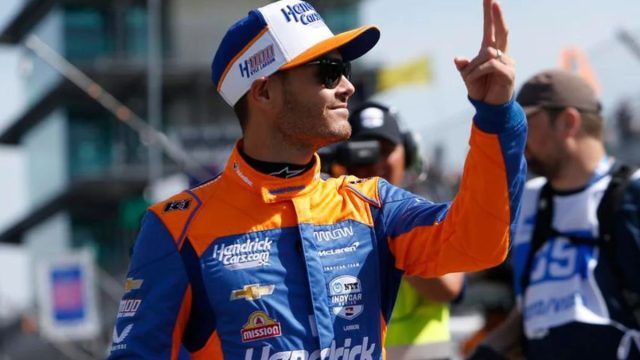NASCAR’s Kyle Larson Exception: The recent scenario involving Kyle Larson’s disrupted Double Dream attempt due to inclement weather has brought to light intriguing questions about NASCAR’s waiver policies and their evolving criteria. Traditionally, waivers have been granted for health-related reasons, but Larson’s case highlights the potential for broader considerations, such as the commercial impact and promotional value of high-profile drivers. This prompts us to consider whether NASCAR is prioritizing driver clout over the sanctity of its crown jewel events.
Key Highlights
- Larson’s disrupted Double Dream racing plan emphasized his significant influence and dedication.
- Hendrick Motorsports’ investment in Larson’s preparation showcased their commitment to his dual-race ambition.
- NASCAR’s potential playoff waiver for Larson highlights his promotional value and exceptional track record.
- Past waiver instances for health reasons contrast with Larson’s non-injury-related situation, indicating evolving waiver criteria.
- Larson’s high-profile status and contribution to NASCAR’s brand influence waiver decisions, reflecting driver clout.
Kyle Larson’s Double Dream Disrupted
Kyle Larson’s ambitious pursuit of achieving the Double Dream—competing in both the Indianapolis 500 and the Coca-Cola 600 on the same day—faced an unforeseen setback as inclement weather ruined his carefully crafted plans. The 2024 motorsports season was highly anticipated, with fans and analysts eagerly awaiting May, dubbed the greatest day in motorsports.
Larson’s endeavor, marked by 16 months of rigorous preparation, was representative of his dedication and resilience. However, nature’s intervention rendered his extensive efforts futile, highlighting the unpredictable nature of outdoor sports.
Larson’s preparation for the Double Dream was meticulous. His rigorous training regimen was designed to adapt to the grueling demands of racing two of motorsport’s most prestigious events within a single day. The Indianapolis 500, with its high-speed oval challenges, and the Coca-Cola 600, NASCAR’s longest race, require not only physical endurance but also strategic expertise.
Larson’s team, Hendrick Motorsports (HMS), invested considerable resources to make sure he was at peak readiness, showcasing the collective ambition behind this monumental task.

HMS Team’s Decision and NASCAR’s Likely Response
The HMS team’s choice to remain and participate in the race after the four-hour delay at the Indy 500, despite the impending thunderstorm forecast, highlights the intricate interplay between strategic risk-taking and career implications in professional motorsports. This decision emphasizes the team’s commitment to seizing every competitive opportunity, even when faced with uncertain weather conditions and potential disruptions.
- Emphasize: Staying could provide a significant advantage if the race proceeded, giving Larson a chance to demonstrate his skills and secure a key victory.
- Subtle: HMS’s presence at the race despite adverse conditions reinforces their image as a resilient and dedicated team, committed to competing at the highest levels.
- Assessment: Understanding the risks of thunderstorms, the team likely weighed the potential benefits against the possibility of weather-related complications.
- Display: Larson’s participation could have far-reaching effects on his NASCAR trajectory, with immediate results and long-term career impact considered.
From NASCAR’s perspective, the decision to potentially pardon Larson reflects a distinct understanding of the sport’s demands and the realities of competitive scheduling. NASCAR’s likely response will involve balancing fairness with the recognition of exceptional circumstances. Granting a waiver to Larson would not only acknowledge the unique predicament but also set a precedent for future cases where external factors disrupt standard racing schedules.
It makes ABSOLUTELY NO SENSE for NASCAR to deny a waiver request when they gave Matt Kenseth a waiver for simply existing — while missing the first four races.
Just give him the damn waiver and let's just move on from this…https://t.co/ONbeRzzhLV
— Joseph Srigley (@joe_srigley) May 27, 2024
Larson’s Performance and the Playoff Waiver
The Indy 500 was supposed to start at 12:45 PM ET. However, a storm hit the area, causing a delay. The rain stopped around 2:30 PM. Track president Doug Boles thought it would take about two hours to dry the track. Finally, the Indy 500 started at around 4:45 PM.
This meant Kyle Larson would miss the start of the Coca-Cola 600 in Charlotte, which is about 70–90 minutes away by air. Justin Allgaier drove his car and finished in 13th place before NASCAR stopped the race. Larson did not get any points from that race. A strict rule says each driver must compete in all 26 regular-season races to make the 16-driver playoffs. However, the HMS team chose to complete the Indy 500 instead. In a YouTube video, Eric Estepp discussed NASCAR’s lenient attitude.
“They’ll almost certainly grant him a playoff waiver, even though he effectively blew off one of NASCAR’s crown jewels to go run in a rival racing series.” – (Eric Estepp)
The reasons are clear. Kyle Larson promoted motorsports like no one has since Kurt Busch. He didn’t just skip the race at Charlotte. After working hard for the “Greatest Spectacle in Racing,” Larson didn’t want to waste his team’s hard work. Also, no one can predict the weather, and the rain ruined HMS’s plans.
“He’s just a damn good race car driver who seems to find the front no matter what car, track, or series he races.” Larson also drives viewership, as seen last weekend. “We saw the tangibles just this past week with Kyle Larson’s Indy 500 qualifying, TV ratings being up over 30% year over year…NASCAR All-Star Race TV ratings were in double digits as well.” – (Eric Estepp)

Past Instances of NASCAR Waivers
Analyzing past instances of NASCAR waivers reveals a precedent of flexibility, particularly in cases involving drivers sidelined due to physical injuries. NASCAR’s history shows that the organization is willing to grant waivers to maintain competitive integrity and guarantee deserving drivers are not unduly penalized for circumstances beyond their control. This approach has been consistently applied in several notable situations.
Chase Elliott injured his legs while skiing in Colorado and missed seven Cup Series races. In 2022, Alex Bowman missed four races after a Sprint Car accident. In both cases, NASCAR gave waivers.
Kyle Busch’s case stands out as one of the most significant. After suffering right leg and left foot fractures in a severe crash during the Xfinity Series race at Daytona, Busch missed several Sprint Cup races. Busch returned in May and won the first of his two championship titles. Since he got injured in a NASCAR support race at a NASCAR track, the waiver was completely justified.
Comparisons with Past Cases
How does Kyle Larson’s situation, devoid of any physical injury, compare to the aforementioned cases where waivers were granted primarily due to health-related absences? The most striking difference lies in the nature of the reasons behind the waiver requests. Historically, NASCAR waivers have been issued when drivers were sidelined by health-related issues, such as physical injuries or medical conditions that temporarily impeded their ability to compete. These prior incidents highlight a clear, tangible reason for the drivers’ absences, grounded in their physical incapacity to race.
In contrast, Kyle Larson’s situation depends not on health but on a set of circumstances that could be deemed inevitable yet non-physical in nature. This deviation challenges the conventional rationale behind the issuance of waivers. Larson’s issues, while significant, does not align with the traditional health-centric justifications, suggesting a potential shift in NASCAR’s waiver policy landscape. This might indicate an evolving flexibility within NASCAR’s administrative framework, wherein the context of absences—whether physical or otherwise—could be considered for waiver eligibility.
Furthermore, Larson’s case is particularly significant because it raises questions about the influence of a driver’s clout within the sport. Larson, being a high-profile, highly skilled driver for Hendrick Motorsports (HMS), brings considerable value to the NASCAR brand. This leads to a more detailed analysis: Is the decision to grant a waiver influenced not just by the circumstances but also by the driver’s stature and the potential impact on the sport’s overall image and commercial interests?

News in Brief: NASCAR’s Kyle Larson Exception
NASCAR’s handling of Kyle Larson’s situation highlights a potential shift in waiver policy, emphasizing the commercial and promotional impact of high-profile drivers. This departure from health-centric justifications indicates an evolving landscape where the sport’s economic and brand considerations may increasingly influence decisions.
Analyzing Larson’s case alongside past instances reveals a detailed approach that could redefine waiver criteria, prioritizing drivers’ comprehensive contributions to NASCAR’s marketability and fan engagement over traditional health-related reasons.
ALSO READ: Kyle Larson’s Heartfelt Confession on ‘Double’ Struggle: ‘I Hate It for Rick’
